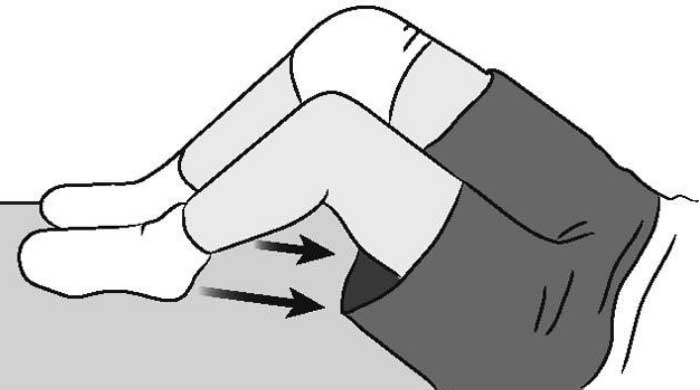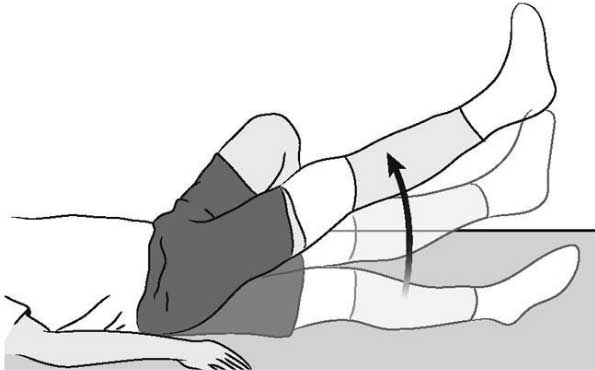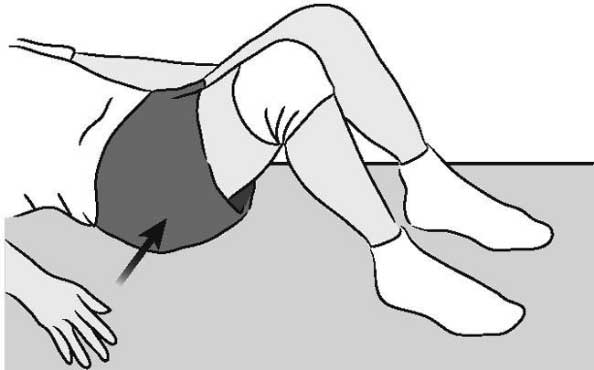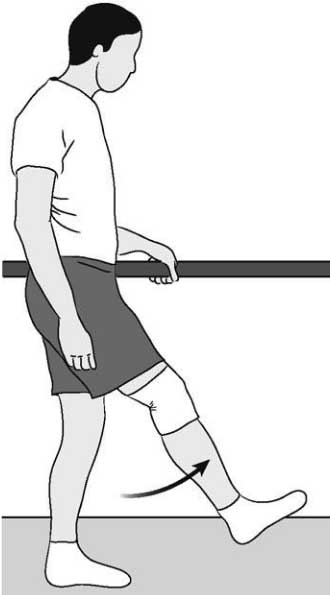Knee Meniscectomy
Activity: After your knee arthroscopic meniscectomy, you may be given crutches. These can be used if you feel you need them, but it is OK to walk without them if you can. You may put full weight on your leg after this surgery. Elevation of the leg is important for the first day after the surgery as it helps to reduce the leg swelling. After 1-2 days, if your knee is feeling good, you may increase your activity level gradually.
The attached exercises can be started at 48 hours after surgery. Use ice packs to the knee for the first 24-48 hours after surgery. Apply the ice as frequently as needed after surgery. After 24 hours, you may use the ice packs two or more times a day for 20 minutes at a time, if desired for comfort.
Dressings: The post op dressing may be removed 24 hours after surgery. It is normal to have small amounts of drainage of arthroscopy fluid with small amounts of blood on the dressing in the day after surgery. If the dressing or splint feel too tight after the surgery, remove the brace and Ace bandage and reapply it more loosely. Once the dressing is removed, clean the incisions with rubbing alcohol and cover the small incisions with Band-Aids after a shower. It is OK to get the arthroscopy incisions wet in a shower after 24 hours but do not soak them in bath water for one week. Re-wrap the leg with the ace bandage after the skin is dry. Only Hibiclens soap may be used on the surgical leg.
Your knee will be swollen. That is normal, and it will resolve in time with physical therapy.
Driving: You may drive a vehicle after 48 hours if you are able to safely operate the vehicle. If your surgery was on your left knee and you have a car with an automatic transmission, you should be mechanically able to perform the functions associated with normal driving. If your surgery was on your right knee and if you are not able to use your right leg to push on the brake or accelerator you will not be permitted to drive. You cannot drive if you are taking narcotic pain medication.
Work: You may return to work as soon as you feel able and performing your regular job is possible given your activity restrictions.
Medications: You may resume your normal medications that you took prior to surgery. Your prescription for pain medication was sent to your pharmacy before the surgery. You should not require any more pain medication than we ordered before your first office visit.
If you are not taking the prescribed pain medications, you may take Extra-Strength Tylenol as directed on the label. You may take over-the-counter anti-inflammatory medications such as Advil or Aleve if you know you can tolerate those medications and are not taking blood thinners. Once the nerve block begins to wear off, start your pain medicine.
Unless you are allergic, take one aspirin 81mg twice per day to reduce the chances of blood clots. Blood clots may occur after any surgery or injury to the leg and may be associated with complaints of calf pain, calf cramping, pain in back of the knee, chest pain or shortness of breath.
Follow up: Make an appointment to be seen the first or second office day after surgery. I will discuss the procedure and the findings during surgery at this visit.
Problems: Complications from knee surgery can occur and you must be aware of the early warning symptoms of some of the more serious problems that may arise. The risk of surgery is never “zero”.
Call the office for a temperature over 101 degrees, pain not controlled by the pain medication, or drainage from the incision that lasts more than 24 hours or calf pain, chest pain, or shortness of breath.
Regular exercise to restore your knee mobility and strength is necessary. Therapy is an essential part of a good result, but some simple exercises can be started when pain permits within 48 hours of surgery. We recommend that you exercise approximately 20 to 30 minutes two or three times a day. The following guide can help you better understand your exercise or activity program that may be supervised by a therapist at the direction of Dr. Mazzara and his staff.
As you increase the intensity of your exercise program, you may experience temporary set-backs. If your knee swells or hurts after an exercise activity, you should lessen or stop the activity until you feel better. You should Rest, Ice, Compress (with an elastic bandage), and Elevate your knee (R.I.C.E.). Contact your surgeon if the symptoms persist.
Knee Arthroscopy Exercise Guide
Regular exercise to restore strength and mobility to your knee is important for your full recovery after arthroscopic surgery. You should try to exercise for approximately 20 to 30 minutes, 2 or 3 times a day.
Hamstring Contraction:
No movement should occur in this exercise. Lie or sit with your knees bent to about 10 degrees. Pull your heels into the floor, tightening the muscles on the back of your thigh. Hold for 5 seconds, then relax.
Repeat 10 times.

Quadriceps Contraction
Lie on stomach with a towel roll under the ankle of your involved knee. Push ankle down into the towel roll. Your leg should straighten as much as possible. Hold for 5 seconds, then relax.
Repeat 10 times.

Straight Leg Raises
Lie on your back, with your uninvolved knee bent. Straighten your involved knee. Slowly lift leg about 6 inches, then hold for 5 seconds. Continue lifting in 6-inch increments, holding each time. Reverse the procedure, and return to the starting position.
Repeat 10 times.
Advanced: Before starting, add weights to your ankle, starting with 1 pound of weight and building up to a maximum of 5 pounds of weight over 4 weeks.

Buttock Tucks
While lying down on your back, tighten your buttock muscles. Hold tightly for 5 seconds, then relax.
Repeat 10 times.

Straight Leg Raises, Standing
Support yourself, if necessary, and slowly lift your involved leg forward keeping your knee straight. Return to the starting position.
Repeat 10 times.

